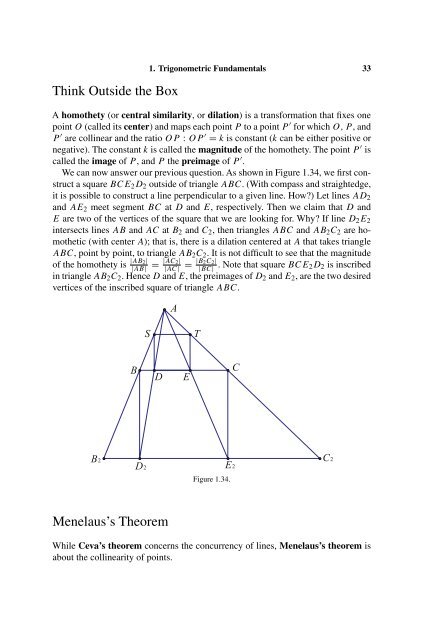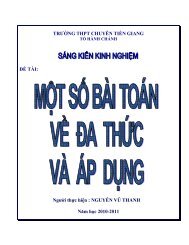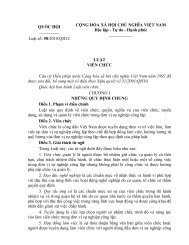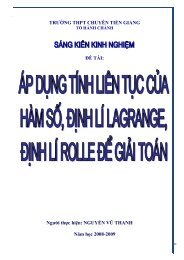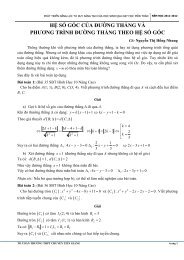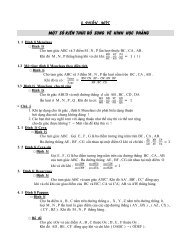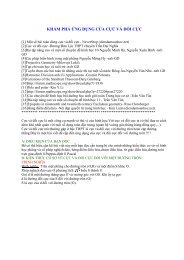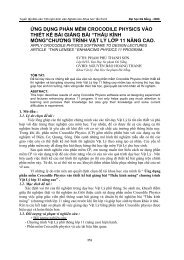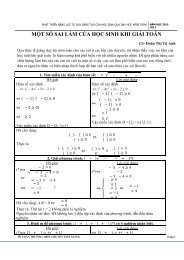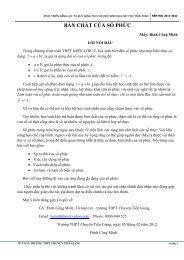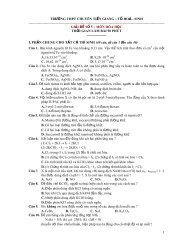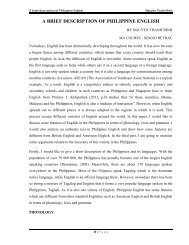103 Trigonometry Problems
103 Trigonometry Problems
103 Trigonometry Problems
You also want an ePaper? Increase the reach of your titles
YUMPU automatically turns print PDFs into web optimized ePapers that Google loves.
Think Outside the Box<br />
1. Trigonometric Fundamentals 33<br />
A homothety (or central similarity, ordilation) is a transformation that fixes one<br />
point O (called its center) and maps each point P to a point P ′ for which O,P, and<br />
P ′ are collinear and the ratio OP : OP ′ = k is constant (k can be either positive or<br />
negative). The constant k is called the magnitude of the homothety. The point P ′ is<br />
called the image of P , and P the preimage of P ′ .<br />
We can now answer our previous question. As shown in Figure 1.34, we first construct<br />
a square BCE 2 D 2 outside of triangle ABC. (With compass and straightedge,<br />
it is possible to construct a line perpendicular to a given line. How?) Let lines AD 2<br />
and AE 2 meet segment BC at D and E, respectively. Then we claim that D and<br />
E are two of the vertices of the square that we are looking for. Why? If line D 2 E 2<br />
intersects lines AB and AC at B 2 and C 2 , then triangles ABC and AB 2 C 2 are homothetic<br />
(with center A); that is, there is a dilation centered at A that takes triangle<br />
ABC, point by point, to triangle AB 2 C 2 . It is not difficult to see that the magnitude<br />
of the homothety is |AB 2|<br />
|AB|<br />
= |AC 2|<br />
|AC|<br />
= |B 2C 2 |<br />
|BC| . Note that square BCE 2D 2 is inscribed<br />
in triangle AB 2 C 2 . Hence D and E, the preimages of D 2 and E 2 , are the two desired<br />
vertices of the inscribed square of triangle ABC.<br />
A<br />
S<br />
T<br />
B<br />
D<br />
E<br />
C<br />
B2<br />
D2<br />
E2<br />
C2<br />
Figure 1.34.<br />
Menelaus’s Theorem<br />
While Ceva’s theorem concerns the concurrency of lines, Menelaus’s theorem is<br />
about the collinearity of points.


